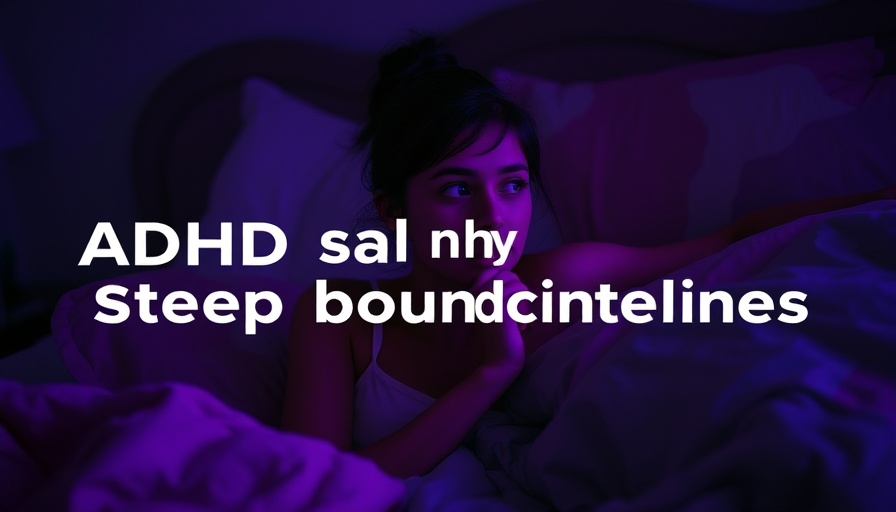
Understanding ADHD and Sleep Challenges
For many people with ADHD, particularly those in the age range of 35-60, the challenge of falling asleep can feel insurmountable. Sleep disturbances are common, and distractions tend to multiply in the stillness of the night, making it harder to power down after a busy day in a demanding classroom environment. Understanding the unique challenges of an ADHD brain is essential for teachers and education leaders who may struggle nightly.
Why Setting Boundaries Matters for Sleep
One of the most impactful strategies to improve sleep is establishing clear boundaries. These boundaries help signal to our brains that it’s time to unwind and prepare for rest. For individuals with ADHD, too much stimulation can provoke anxiety and distract from the simple act of sleeping. Setting definite times for winding down—such as reducing screen time in the evenings, reading a book, or engaging in calming practices—can help create a predictable routine that signals the brain it's time for sleep.
Creating a Sleep-Conducive Environment
An equally essential aspect of promoting better sleep is optimizing the sleep environment. This can include dimming the lights in the evening, using blackout curtains to limit distractions from outside, and ensuring that the bedroom is cool and quiet. Sound machines can also significantly help mask outside noise, providing a consistent sound that may soothe an overstimulated mind.
Practical Techniques for Better Sleep Hygiene
Establishing a sleep routine is also crucial. This could involve:
- Keeping a consistent sleep schedule, even on weekends, to set the body's internal clock.
- Avoiding caffeine and heavy meals before bed, particularly for those not used to them.
- Incorporating relaxation techniques such as meditation, yoga, or deep breathing exercises.
- Writing down worries and to-do lists ahead of time to clear the mind.
Future Trends and Insights on ADHD Management
As awareness around ADHD and sleep issues continues to expand, various therapies and interventions are gaining traction. New approaches, such as behavioral therapy and lifestyle adjustments, focus on teaching strategies for managing distractions not just in the classroom, but also at home during the evening hours. Enhanced mindfulness practices and community support groups aimed at ADHD adults show promising results in aiding sleep and managing daily stressors.
Conclusions and Moving Forward
Understanding the need for boundaries and a conducive environment can empower educators and those with ADHD to take control of their sleep routines. Remember, small changes can lead to significant improvements over time. So, as we rethink the nightly routine roadmap, let's champion sleep as a crucial element of mental health.
By taking active measures, teachers can model effective self-care not just for themselves, but also for the students who look up to them. Empowering oneself through knowledge about mental health and sleep helps promote a more rounded, healthier lifestyle.
 Add Row
Add Row  Add
Add 




 Add Row
Add Row  Add
Add 

Write A Comment